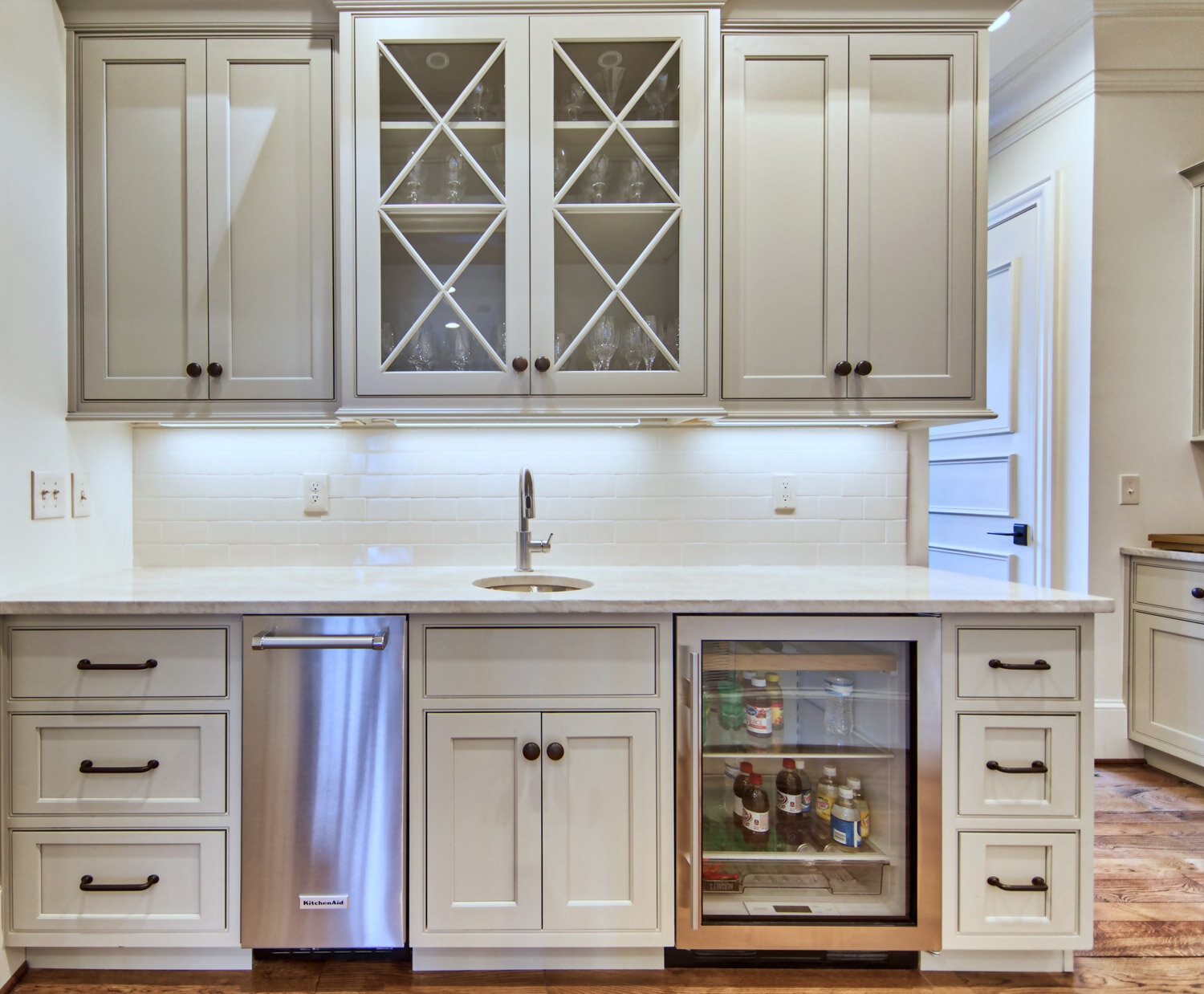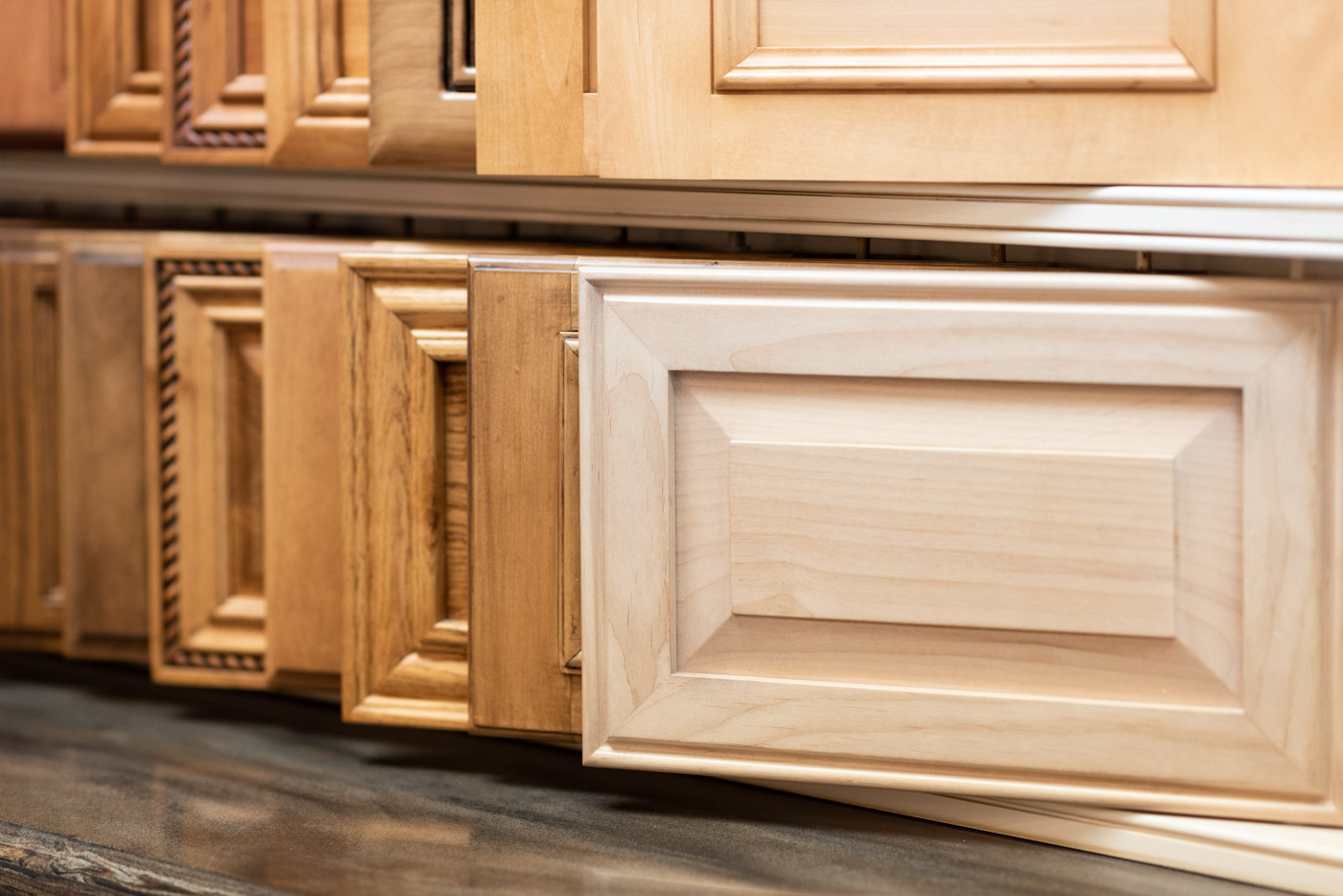Styles and Designs of New England Cabinet Doors
New England cabinet doors, renowned for their timeless elegance and craftsmanship, offer a diverse range of styles to complement various home aesthetics. From the understated simplicity of Shaker designs to the rich detail of raised panel doors, the choices reflect the region’s rich history and enduring appeal. Understanding these styles and their characteristics is crucial for homeowners seeking to create a cohesive and visually stunning kitchen or other living space.
Common New England Cabinet Door Styles and Their Features
The following table details the most prevalent styles, their defining features, and common materials used in their construction. The selection of wood and finish significantly impacts the overall aesthetic and durability of the cabinets.
| Style | Distinguishing Features | Typical Materials | Finish Examples |
|---|---|---|---|
| Shaker | Simple, flat-panel design with clean lines; often features a recessed center panel. | Maple, cherry, pine | Natural, painted (white, off-white, grey), stained |
| Raised Panel | Features a central panel raised above the surrounding frame; offers a more traditional and ornate look. | Oak, cherry, maple | Stained (medium to dark tones), lacquered |
| Flat Panel | Simple, smooth, and unadorned; offers a modern and minimalist aesthetic. | Maple, MDF, painted finishes | Painted (various colors), stained (lighter tones) |
| Beaded Inset | A recessed panel with a decorative beading detail around the perimeter. Offers a slightly more ornate look than a flat panel but less so than a raised panel. | Cherry, Maple, Pine | Stained, painted (especially popular in off-whites and creams) |
Aesthetic Appeal in Different Home Settings
The choice of cabinet door style significantly impacts the overall feel of a home. Consider the advantages and disadvantages of each style within different home settings:
New england cabinet doors – The following points highlight the suitability of different styles for various home aesthetics:
- Shaker:
- Advantages: Versatile, works well in traditional, transitional, and modern farmhouse settings; clean lines create a sense of order and simplicity.
- Disadvantages: Can appear too plain in highly ornate settings; requires careful consideration of hardware choices to avoid a stark look.
- Raised Panel:
- Advantages: Adds a touch of elegance and formality; suitable for traditional and transitional homes; creates a sense of richness and depth.
- Disadvantages: Can feel overwhelming in smaller spaces or modern minimalist settings; requires more intricate detailing and craftsmanship.
- Flat Panel:
- Advantages: Sleek and modern; ideal for contemporary and minimalist kitchens; creates a clean, uncluttered look.
- Disadvantages: Can appear stark or cold without careful consideration of color and hardware; may not suit traditional settings.
- Beaded Inset:
- Advantages: Offers a balance between simple and ornate, suitable for transitional styles; adds subtle detail without being overly fussy.
- Disadvantages: May not be as versatile as Shaker or flat panel styles; requires careful consideration of the beading detail to avoid clashing with other elements.
Hardware Choices to Complement Cabinet Door Styles
Hardware selection is crucial in enhancing the aesthetic appeal of New England cabinet doors. The right knobs or pulls can elevate the overall design and create a cohesive look.
| Cabinet Door Style | Recommended Hardware Styles | Example Description |
|---|---|---|
| Shaker | Simple knobs, cup pulls, bar pulls | Small, understated knobs in brushed nickel or oil-rubbed bronze complement the Shaker’s clean lines. Cup pulls offer a slightly more modern touch. |
| Raised Panel | Ornate knobs, decorative pulls, bin pulls | Larger, more detailed knobs or pulls with intricate designs enhance the richness of raised panel doors. Bin pulls can add a touch of traditional charm. |
| Flat Panel | Sleek bar pulls, minimalist knobs, integrated handles | Long, slender bar pulls or small, simple knobs in brushed stainless steel or matte black create a modern, minimalist look. Integrated handles offer a seamless, contemporary feel. |
| Beaded Inset | Slightly more ornate knobs or pulls than Shaker style, but simpler than Raised Panel styles. | Consider knobs or pulls with subtle detailing that complement the beading without overpowering it. Materials like brushed nickel or antique brass can add warmth. |
Manufacturing and Customization of New England Cabinet Doors
The creation of exquisite New England cabinet doors is a meticulous process, blending traditional craftsmanship with modern manufacturing techniques. From the careful selection of lumber to the final protective finish, each step contributes to the enduring quality and beauty of these handcrafted pieces. Understanding this process allows for a deeper appreciation of the artistry and dedication involved in producing these exceptional cabinet doors.
The manufacturing process for New England cabinet doors is a testament to skilled artistry and precision. It’s a journey from raw materials to a finished product that embodies both tradition and modern efficiency.
Manufacturing Process
The following steps Artikel the typical manufacturing process, though variations may exist depending on the specific design and customization requests.
- Wood Selection and Preparation: High-quality hardwoods, such as maple, cherry, oak, or walnut, are carefully selected for their grain, color, and overall quality. The wood is then kiln-dried to reduce moisture content, preventing warping and cracking in the finished product. This crucial initial step ensures the longevity and stability of the doors.
- Cutting and Shaping: Precise measurements are taken, and the wood is cut and shaped according to the design specifications. Advanced CNC machinery may be used for intricate designs, ensuring accuracy and efficiency. Experienced craftsmen then refine the pieces, ensuring a perfect fit and finish.
- Joinery and Assembly: Traditional joinery techniques, such as mortise and tenon or dovetail joints, are often employed to create strong and durable connections. These methods not only enhance structural integrity but also add to the aesthetic appeal of the doors. The individual components are carefully assembled to form the complete door frame.
- Finishing: The cabinet doors undergo a multi-step finishing process to enhance their beauty and durability. This may include sanding, priming, and applying multiple coats of stain or paint, followed by a protective topcoat. The finishing process is tailored to the chosen wood type and desired aesthetic, ensuring a rich and long-lasting finish.
Customization Options
New England cabinet doors offer extensive customization options, allowing homeowners to create a truly bespoke look that complements their individual style and home décor. The flexibility in design extends from subtle choices to significant alterations.
Customers can select from a wide variety of wood types, each with its unique grain patterns and color tones. Sizes can be adjusted to perfectly fit existing cabinets or new installations. A broad palette of stains and paint finishes allows for personalized color schemes, and an array of hardware options – from traditional knobs and pulls to modern minimalist designs – further enhances the customization potential. The combination of these choices creates an opportunity to seamlessly integrate the cabinet doors into any existing design aesthetic.
Cost Factors
The cost of New England cabinet doors is influenced by several factors, primarily materials, labor, and the extent of customization.
| Customization Level | Material Cost | Labor Cost | Total Estimated Cost (per door) |
|---|---|---|---|
| Standard (stock size, standard wood, standard finish) | $100 – $200 | $50 – $100 | $150 – $300 |
| Moderate (custom size, upgraded wood, custom finish) | $200 – $400 | $100 – $200 | $300 – $600 |
| High (custom size, premium wood, complex finish, custom hardware) | $400 – $800 | $200 – $400 | $600 – $1200 |
Note: These are estimated costs and can vary significantly based on specific choices and regional factors. It’s advisable to obtain quotes from multiple manufacturers for accurate pricing.
Integrating New England Cabinet Doors into Home Design

The understated elegance of New England cabinet doors lends itself beautifully to a variety of home design styles, seamlessly blending traditional craftsmanship with contemporary aesthetics. Their inherent versatility allows them to anchor a room’s design, providing a foundation upon which a cohesive and stylish space can be built. The careful selection of door style, color, and complementary design elements is key to achieving a truly harmonious and inviting atmosphere.
New England Cabinet Doors in Kitchen Design
New England cabinet doors, with their clean lines and often simple detailing, offer a timeless appeal perfectly suited to the heart of the home. Consider a kitchen featuring shaker-style doors in a warm, creamy white. This palette provides a bright, airy feel, complemented by brushed nickel hardware and light granite countertops. The overall effect is one of classic sophistication and understated luxury. Alternatively, imagine a kitchen utilizing raised-panel doors in a deep, rich cherry wood. This darker tone creates a more dramatic and traditional atmosphere, beautifully offset by stainless steel appliances and a dark brown hardwood floor. The contrast between the warm wood and cool metal adds depth and visual interest. A final example might showcase a kitchen with flat-panel doors in a soft, gray-blue hue. This contemporary twist on a traditional style works exceptionally well with white subway tile backsplash, Caesarstone countertops in a light neutral color, and open shelving to showcase carefully curated tableware.
New England Cabinet Doors in Bathroom Design
The tranquility of a bathroom is enhanced by the calm sophistication of New England cabinet doors. A bathroom design incorporating shaker-style doors in a crisp white creates a clean, spa-like environment. Paired with chrome fixtures, a white marble countertop, and subtle gray-toned floor tiles, this design exudes a sense of serenity. For a more rustic and charming bathroom, consider using raised-panel doors in a light oak finish. This warm, natural wood tone complements a stone countertop, wicker baskets for storage, and a vintage-inspired mirror, creating a welcoming and inviting space. In contrast, a modern bathroom might benefit from sleek, flat-panel doors in a matte black. This bold choice, paired with white porcelain tiles, a floating vanity, and gold accents, results in a sophisticated and stylish bathroom that is both contemporary and timeless.
Key Design Elements for Cohesive Style
The successful integration of New England cabinet doors relies on a careful consideration of several key design elements. A cohesive look is achieved through thoughtful planning and attention to detail.
Maintaining a consistent color palette throughout the space is crucial. This creates a sense of unity and visual harmony.
Choosing complementary hardware finishes, such as knobs or pulls, that match or contrast subtly with the cabinet doors enhances the overall aesthetic.
The selection of countertops and backsplashes should complement the color and style of the cabinet doors, creating a balanced and visually appealing design.
Floor materials and wall colors should work in harmony with the cabinets, creating a cohesive and visually pleasing environment.

